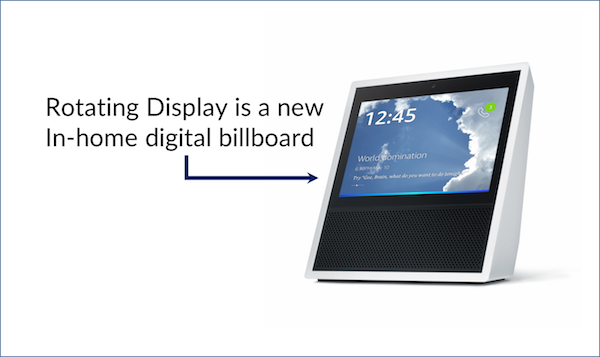Watch out Facebook. Amazon Echo Show Is an In-Home, Attention Grabbing Billboard.
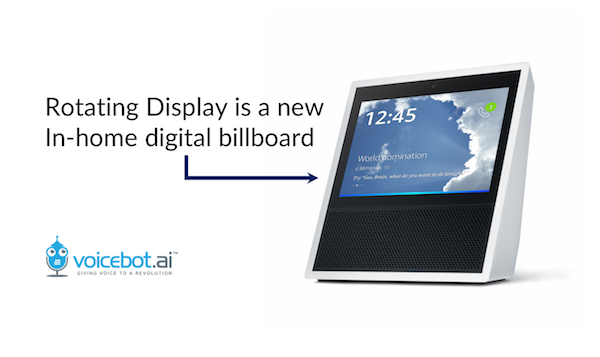
I have lived with two Amazon Echo Shows for about six weeks now and the most noticeable feature is not what I expected. The calling and drop-in features are very good and have been used, but not frequently. Having multi-modal interactions that supplement voice with an occasional visual display or video is an enhanced experience. Access to video in general is a plus. The daily deals and shopping experience for Amazon Prime is better than voice-only for many purchases. Most of this I could have anticipated. I cannot say the same for the rotating digital billboard that now occupies my kitchen and office.
What You See Encourages Interaction
My daughter checks out the Echo Show display messages every time she is in the kitchen and often asks Alexa for more information or tells us about the latest headline. I find myself glancing over at the Echo Show display occasionally that rests on my desk. And yes, I have asked Alexa to tell me about the item on the screen. Sometimes it has been about items that hold particular interest for me. Other times it has admittedly been about the inane or just amusing. Occasionally, it has been to try out an Echo Show feature that I was unaware of previously.
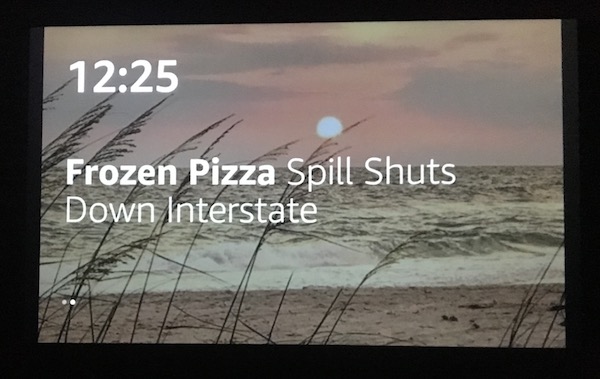
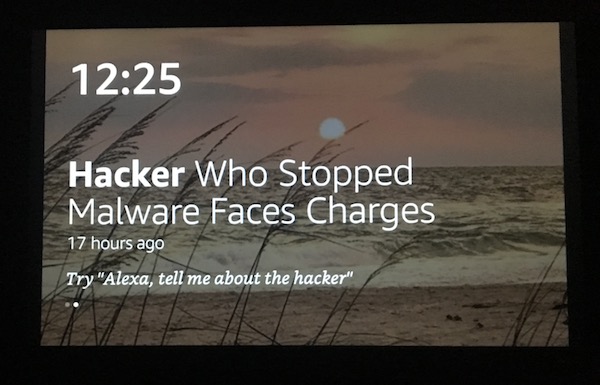
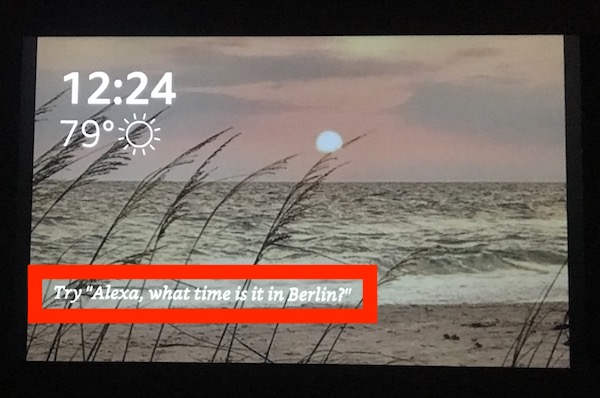
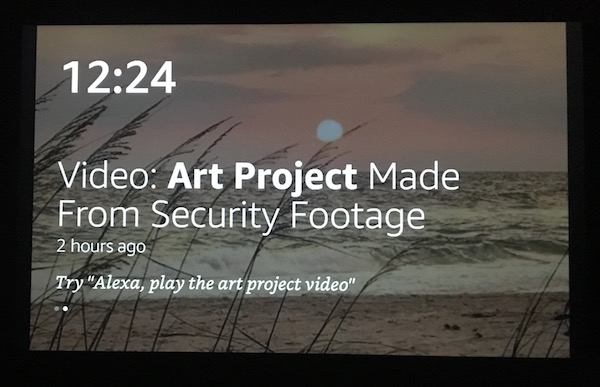
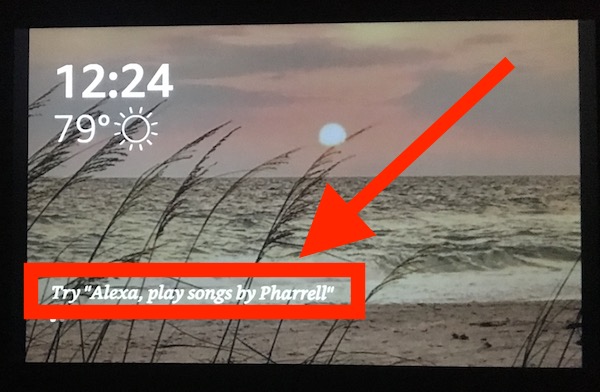
The content refreshes throughout the day. As a result, you may see the same message a number of times, but then are offered an entirely new set of calls to action. I say calls to action because the rotating messages are essentially invitations to interaction. It is an entirely new method of content discovery; a digital billboard, controlled by someone else, for the home.
Digital Out of Home, Moves In-Home
What Echo Show has tapped into is the benefits of combining the hyper-convenience of voice interaction with digital display. Everyone assumes the primary intent of Echo Show, or even integrations between voice and television, is to display things that we ask for or supplement voice interactions when visual elements can enhance the experience. The device meets this standard. You can watch YouTube and Amazon Prime Video. Amazon Alexa skills like Food Network and Jeopardy are better with a visual complement. However, the most revolutionary aspect of Echo Show may be the content discovery more than providing voice access to visual content.
Today, Echo Show’s rotating messages represent a content discovery system. Another way to say this is a content promotion system. Getting displayed on Echo Show should drive awareness of and interaction with your content. Eventually, a content promotion system is likely to become an advertising system. The digital billboards we see out in public today represent more than $10 billion in annual advertising.
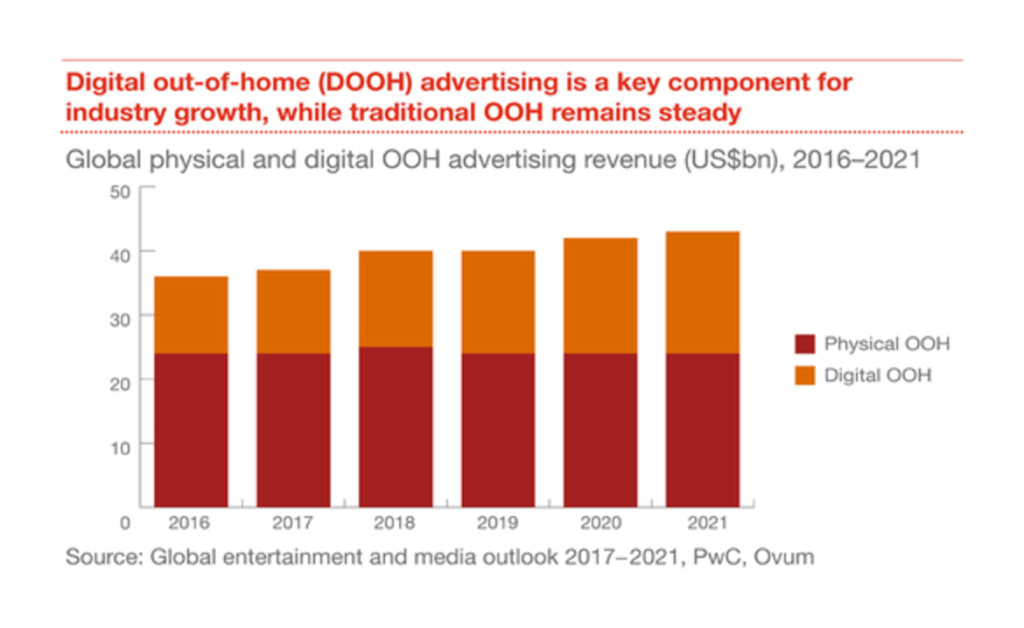 A New Advertising Network
A New Advertising Network
What do you think the long-term value of advertising in-home on voice-interactive displays will be? The power of driving awareness among captive audiences is always a draw for advertisers. There is added benefit to this advertising coming into the kitchen, living room and bedroom in a way that doesn’t interrupt other activities like we see in the television model. You can either look at the Echo Show or ignore it. Your choice. In addition, there is an opportunity to deliver this advertising in context of other home-based activities. If you are about to start cooking or in the middle of laundry, messages related to those activities can have added impact. And, you can purchase items right there with your Amazon Prime account.
Amazon doesn’t technically use the rotating display for advertising today. Echo Show suggests content and features for users to try. However, some of those features take advantage of music services. For example, just today it suggested a Jazz playlist and songs by Pharrell. Both of these requests will provide some results for Amazon Prime Music, but the experience is even better with the Amazon Music Unlimited (AMU) subscription service. Will Echo Show soon display daily deal promotions or suggest reorders based on past purchases? Likely. Will it become a new ad unit for Amazon.com sellers? Almost certainly.
Facebook Wants to Remain King of the Attention Economy
This brings us to Facebook. The company became the dominant player in desktop usage and then replicated that feat when it moved to mobile. Facebook may be about connecting people, but the company’s primary advantage is that it controls so much consumer attention. April 2017 numbers show Facebook and its other divisions such as Instagram, What’s App and Messenger all range between 700 million and two billion monthly users. These apps combined represent 31% of all mobile usage time according to Statista.
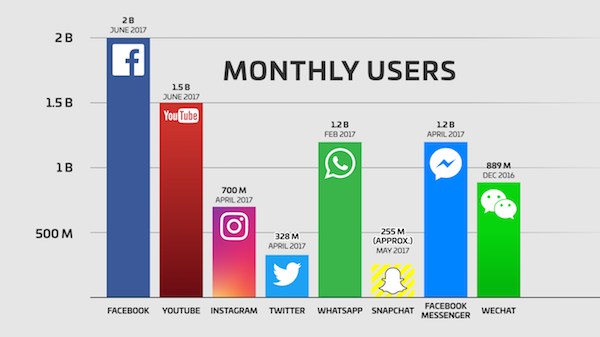
Facebook and its other mobile properties have become habits for consumers. These apps have also become tools that consumers use to fill the “in between times.” These include waiting in line for service, commuting on public transportation, waiting for food to be cooked and just when people are bored. An Echo Show isn’t available in all of these “in between times,” but a percentage of the time on Echo Show will certainly be displacing time previously spent on Facebook properties.
It’s About Facebook Content and Connections
The rumors that Facebook is planning an Echo Show competitor for 2018 is no surprise given these circumstances. Home based displays are simply an opportunity to capture attention. Being able to browse your Facebook or Instagram feeds by voice while cooking or cleaning around the house is another touch point that the company has not yet invaded.
A display device could make your Facebook feed ever-present and remove the friction of having to open an app. You may have noticed that Facebook will send you emails hoping to coax you into opening the app. A display on your kitchen counter or night-stand doesn’t require those prompts. It is always there and visible.
And, this display is about connecting for Facebook. One of the most promoted features of Echo Show is video calling. One reason Facebook bought the VR company Oculus was based on plans to enable friends and family to connect in virtual rooms. This would take Facebook beyond asynchronous posts and into live interaction. Well, Oculus is taking time to get to market and is a long way from being a mass market device for friends and family. Facebook Live has started this march with one-way streaming for real-time sharing. A video calling feature through a Facebook device would provide that bi-directional realtime connection.
It’s Also about Advertising for Facebook
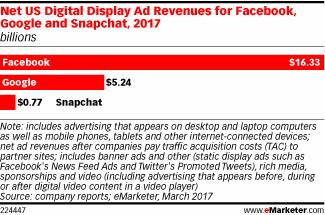 Finally, Facebook is an advertising juggernaut. eMarketer reports that Facebook properties generate over $16 billion in digital advertising revenue, more than three times that earned by Google. Home-based devices like Echo Show are all about display advertising. Having a vehicle for Facebook to control the digital in-home display advertising would only build in this lead.
Finally, Facebook is an advertising juggernaut. eMarketer reports that Facebook properties generate over $16 billion in digital advertising revenue, more than three times that earned by Google. Home-based devices like Echo Show are all about display advertising. Having a vehicle for Facebook to control the digital in-home display advertising would only build in this lead.
Where Is This Headed
It wasn’t obvious that consumers needed a new display in the home. They already have phones, tablets and televisions. However, when you add voice interaction and features such as calling, room-to-room intercom, smart home camera monitoring, video and shopping in a small display with its own stand at an affordable price, there is a market. Business Insider estimates that nine million Echo Shows will be purchased in the first year after release. Facebook has different motivations than Amazon for going after this market, but it certainly fits the business model.
You may not see advertising in the first year or two after release of these products as the key objective will be to drive adoption. Therefore, there will be a lot of talk about optimizing user experience and price tags will be kept low to drive market adoption. After that, I think we all know where it’s headed.
Facebook Planning 2018 Smart Speaker According to Patently Apple
Survey Suggests Amazon Echo Show Sales of 9 Million Units in First Year
Amazon Echo Show Review – Why It’s Brilliant and Full of Surprises


